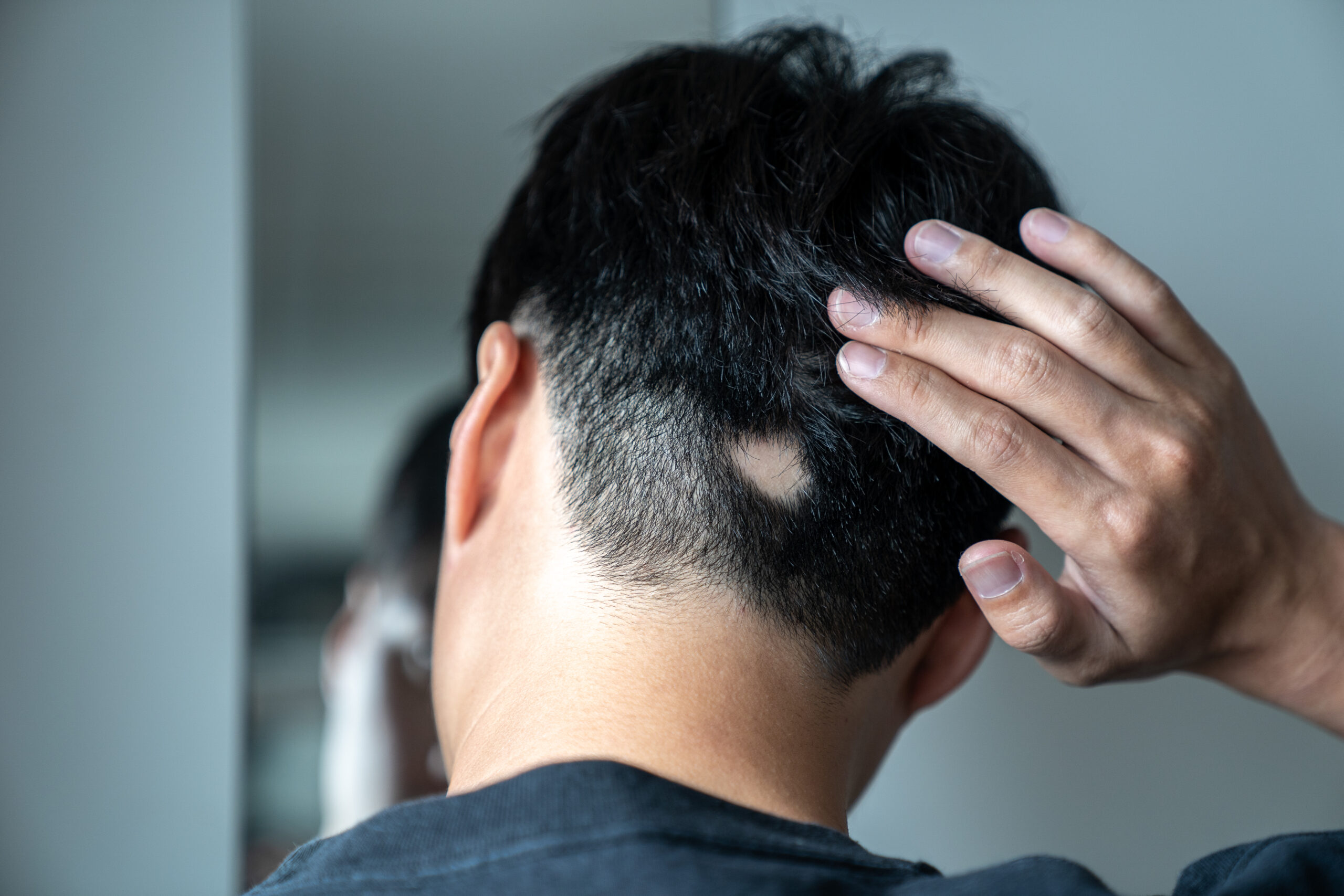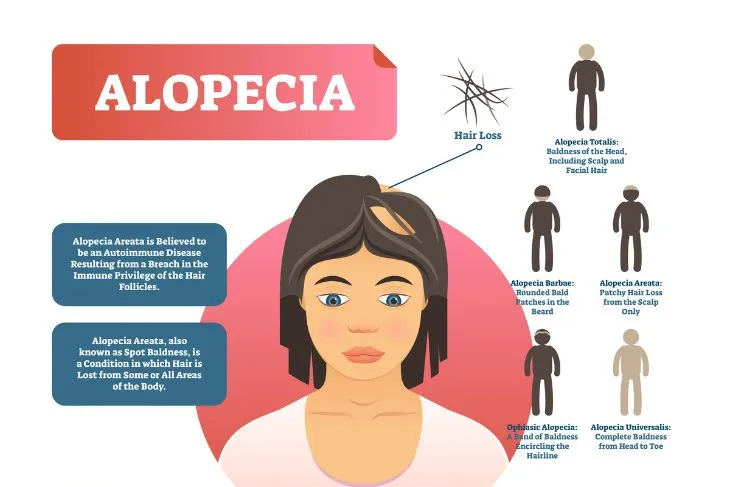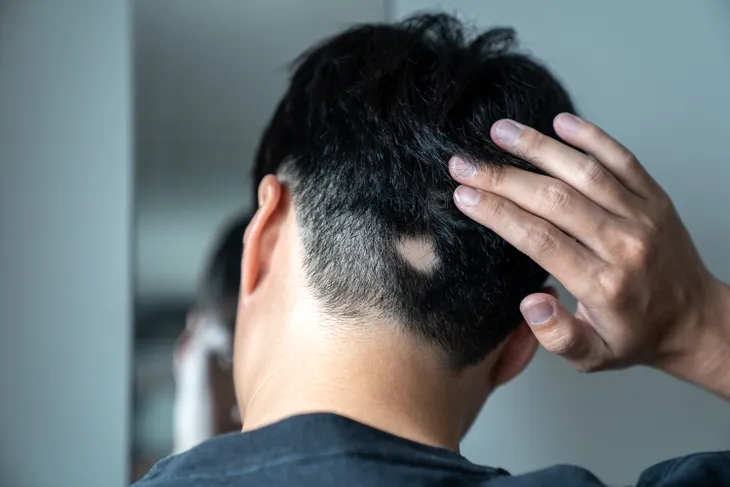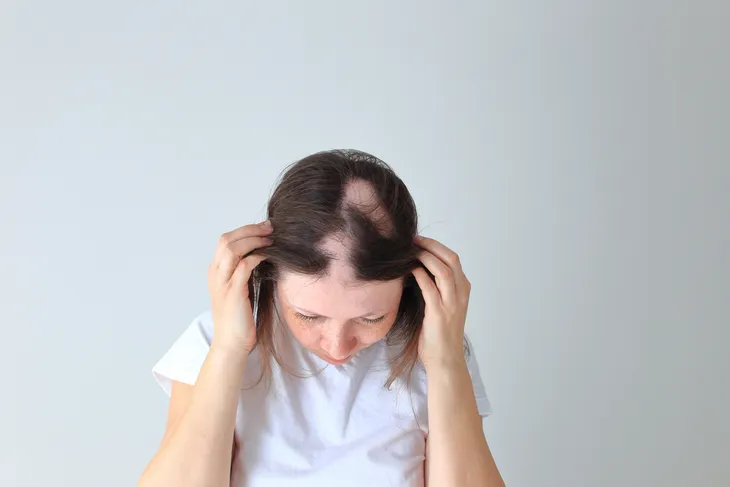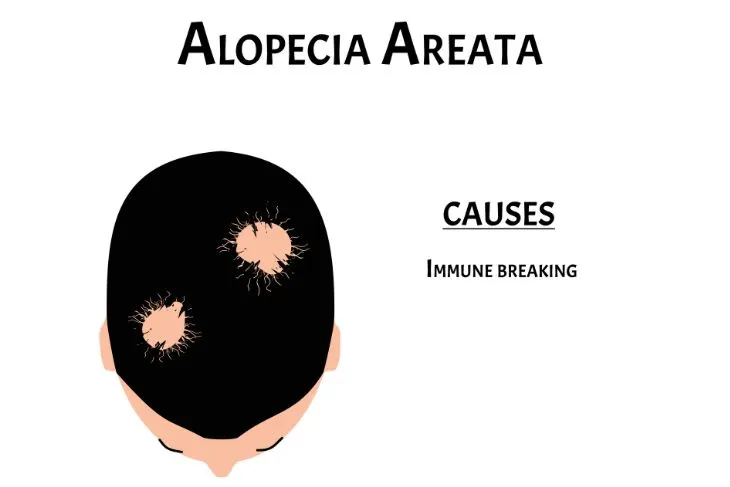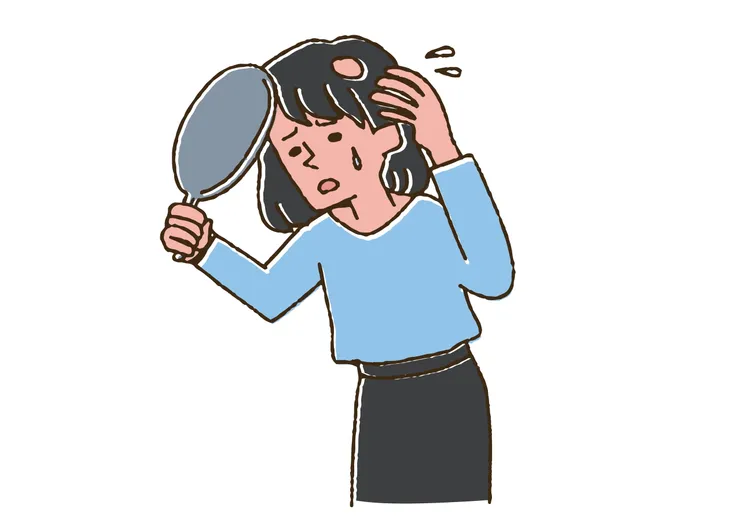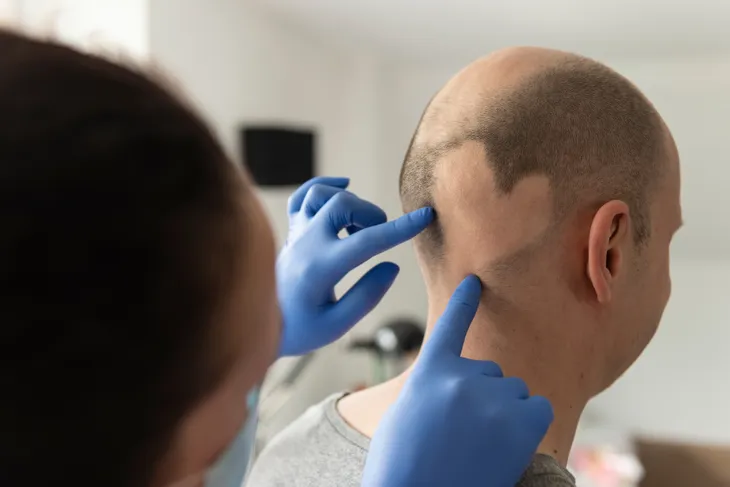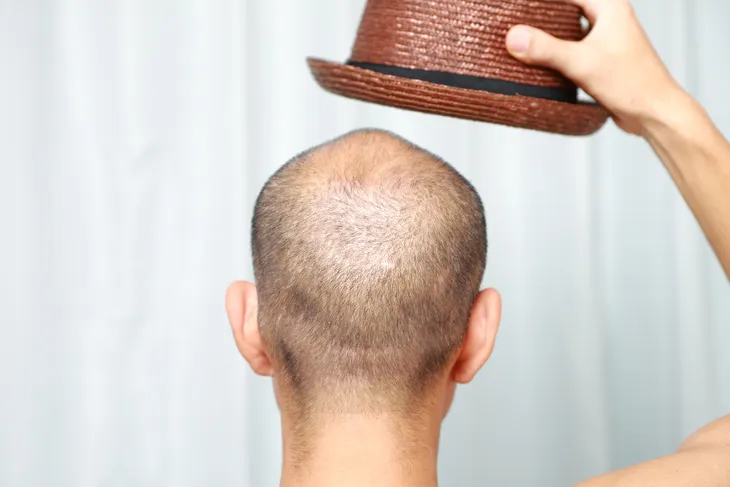- Alopecia areata is an autoimmune disorder that causes the body’s immune system to attack healthy hair follicles which results in hair loss.
- Hair loss associated with this condition is often unpredictable and tends to occur in patches. Typically clumps in the size and shape of a quarter.
- Health experts don’t know why alopecia areata happens to some people, but it is directly caused by the immune system.
- There is no cure for alopecia areata but there are some treatment options ranging from topical ointments to injectable medications.
For many people, their hair is a part of their identity and plays a starring role in their appearance. Unfortunately, hair loss is also quite common. According to the National Alopecia Areata Foundation (NAAF), nearly 7 million people in the United States deal with hair loss.
We often associate hair loss with getting older, but a common form of hair loss is alopecia areata which can happen at any age — both men and women. Alopecia areata is a type of hair loss that causes hair to fall out in patches, making it more noticeable. Here’s a look into everything there is to know about this condition, including the signs, causes, and treatment options…
What is Alopecia?
WebMD explains that alopecia areata is an autoimmune disorder that causes hair to fall out. The immune system attacks the hair follicles causing the hair to fall out. It affects people of all ethnicities, genders, and age. It even sometimes occurs in children.
The hair loss associated with this condition is unique in that the hair falls out almost at random and in patches. Typically in clumps the size and shape of a quarter, says WebMD. The amount of hair loss is different for everyone. Some people only lose their hair in a few places, while others lose a lot. For some people the hair grows back, only to fall out again. In others, it grows back permanently.
Types of Alopecia
There are several different types of alopecia. According to WebMD, alopecia areata is the most common in its main form, but there are other, rare types. The first type is called alopecia areata totalis which means a person has lost all the hair on their head. Another type is alopecia areata universalis which involves hair loss over the entire body, explains the source.
The last two types are diffuse alopecia areata and ophiasis alopecia areata. Diffuse alopecia areata is a sudden thinning of the hair rather than losing it in patches. Ophiasis alopecia areata results in hair loss that follows a band shape around the sides and back of the head, says WebMD.
Main Sign of Alopecia
No matter what type of alopecia a person has the main symptom they will all experience is hair loss. While they all experience hair loss, it varies largely between people in terms of how much hair loss, the severity, or how long lasting the hair loss is, says the NAAF. Everyone will have it slightly different.
With that being said, there are some common symptoms that are good to be aware of. The NAAF lists the following as the most common symptoms of alopecia areata:
- Small, round (or oval) patches of hair loss on the scalp, beard area, or other areas of the body with hair
- Hair loss and regrowth at the same time in different areas
- Significant hair loss in a short period of time
- Hair loss that is mainly on one side of the scalp
- “Exclamation point” hairs that are narrow at the base/next to the scalp
- “Stippling” or “pitting” (rows of tiny dents) on the fingernails
More Extensive Symptoms
In rare cases, some people will experience extensive hair loss. Healthline explains that when this happens it’s typically a sign that this person has one of the more rare types of alopecia, such as alopecia totalis or alopecia universalis.
“Doctors might avoid using the terms ‘totalis’ and ‘universalis’ because some people may experience a degree of hair loss between the two conditions,” writes the source. For example, a person might lose all the hair on their arms, legs, and scalp, but then not their chest. Overall, the hair loss associated with this condition is quite unpredictable. It can sometimes grow back, then fall out again. The extent of hair loss varies greatly from person to person, notes Healthline.
What Causes Alopecia Areata?
There are many different factors that contribute to why a person develops this complex condition. The NAAF explains that because alopecia areata is an autoimmune condition, it’s a direct result of the immune system. Alopecia areata occurs because the “immune system mistakes the normal cells in your body as foreign invaders and attacks these cells,” writes the source.
It’s unclear what triggers this a persons immune system to attack perfectly healthy hair follicles. Health experts are not sure if these triggers are internal or external. For example they do not know if they first happen inside, like from a virus or bacteria, or from outside the body from something in a persons surroundings. NAAF notes it could also be a combination of both.
Alopecia Areata Risk Factors
Although health experts are foggy on why the body attacks hair follicles, there is some speculation that it has to do with genetics. WebMD writes that it likely has something to do with something in a persons genes that triggers the hair loss associated with alopecia areata.
WebMD lists the following as potential risk factors that will make a person more likely to get alopecia areata:
- Family history (another family member has it)
- Down syndrome
- Asthma
- Pernicious anemia
- Seasonal allergies
- Thyroid disease
- Vitiligo
Alopecia Areata Diagnosis
In order to get a diagnosis of alopecia areata, you’ll need to go see a dermatologist. The process typically starts with an overview of symptoms and a physical examination of the area where the patient has experienced some hair loss. WebMD explains the dermatologist might gently pull on the hairs around the bald patch to see if they come out easily, as well as check the shape of the follicles and nail health.
In some rare cases, WebMD states that a biopsy might be required. They’ll remove a small piece of skin from the scalp and look at it under a microscope. They need to do this because there are many different conditions that cause hair loss. For example, it could be a result of a fungal infection. You’ll likely also require a blood test to check out the thyroid, hormone, and immune system.
Treating Alopecia Areata
Unfortunately there is no cure for alopecia areata, and patients who experience hair loss will almost always experience more. Luckily there are several different treatment options available from topical treatments to medical injections.
The route a person chooses to take depends on the severity of their hair loss and whether the risks outweigh the benefits. Always talk to your doctor before using any medication and NAAF warns that these treatments do not work for every person. Their success rate varies and can only minimize the symptoms.
Topical or Oral Treatments
There are several popular topical treatments that can be applied to the scalp to stimulate hair growth, says Healthline. Many of these medications are available over-the-counter (OTC) or by prescription. The first is Minoxidil (Rogaine). This can be purchased OTC without a prescription and is commonly used for hair loss. The source warns that it’s not FDA approved to treat alopecia areata, so talk to a doctor before using it. Other topical agents are Anthralin (Dritho-Scalp), corticosteroid creams, and topical immunotherapy.
Oral treatments are typically reserved for people who experience 50-percent or more hair loss on their scalp or other areas of their body. The same source lists cortisone tablets as a possible solution for extensive alopecia, but there are significant side effects so it should be discussed at length with a doctor first. There are also oral immunosuppressants like methotrexate and cyclosporine.
Injections or Laser and Light Therapy
Steroid injections can be used for mild cases of alopecia areata, says Healthline. This is particularly beneficial for people who are experiencing patchy alopecia and wanting to encourage new hair growth in their bald spots. The needles used for the injections are quite small and they inject steroid into the area. This treatment is high maintenance as it has to be repeated every 1 to 2 months in order to be successful with regrowth. Healthline warns it does not prevent further hair loss.
According to the Mayo Clinic, the FDA has approved a low-level laser device that can be used as a treatment for hereditary hair loss in both men and women. It has been shown to be effective to improve hair density in some small studies. However, more long-term studies are needed.
Natural Treatments
As with any other medical condition, some people choose a more natural route with their treatment. When it comes to alopecia areata, there are a few alternative therapies available. However, it’s important to note they are all experimental, says Healthline. Some natural and alternative treatments include acupuncture, aromatherapy, vitamins and supplements, as well as some essential oils.
Healthline explains there is also some evidence that diet can play a role in preventing hair loss or encouraging new hair growth. The anti-inflammatory diet is popular among people with autoimmune conditions. “This type of eating plan is designed to help reduce the body’s autoimmune response and the chances of another hair loss episode or further hair loss,” writes the source. There have also been studies around the Mediterranean diet and it’s positive effects with alopecia areata.
Home Care
Unlike other skin diseases, alopecia areata does not result in redness or rashes after the hair falls out. There are no hives or itchiness either, says NAAF. However, the hair once acted as a barrier from outside elements, so people are now left with the issue of protecting their skin from things like sun exposure or other harsh elements. A bare scalp is also quite sensitive to cold temperatures.
WebMD suggests wearing wigs, hats, or scarves to protect the head from the sun. Other things that can be done at home to reduce or manage the symptoms of alopecia areata are to reduce stress. “Personal troubles seem to trigger alopecia areata, although this has not been proven scientifically,” writes the source.
